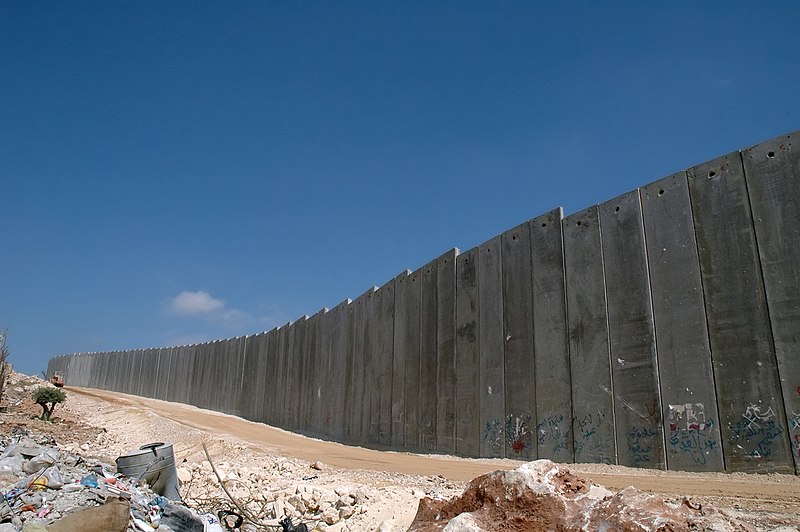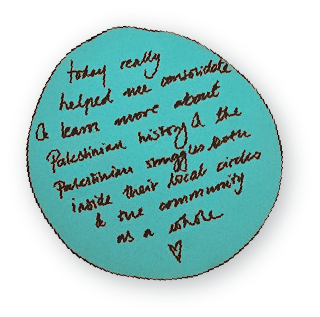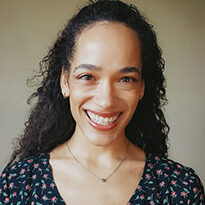Separation Wall

In November 2000, Israeli Prime Minister Ehud Barak approved the first project to build a “barrier” for proclaimed security reasons and border reinforcement. This barrier, or the Separation Wall as it has come to be known, reaches up to 9 meters tall and 60 meters wide in some areas, and stretches to over 700 kilometers. The wall takes different forms in different areas, at certain points an electronic or barbed-wire fence and at others a large concrete wall.
Construction of the Separation Wall has included confiscation of Palestinian land and the uprooting of trees which are vital to the livelihood of many Palestinian farmers. Crucially, the Wall is not being built on, or in most cases even near, the 1967 Green Line (the border between Israel and the Palestinian West Bank that was agreed upon by Israel, Egypt, Jordan, Lebanon and Syria in the 1949 Armistice Agreements). Rather, the wall cuts deep into the West Bank, expanding Israel’s seizure of Palestinian land and resources and further inhibiting Palestinian freedom of movement. In total, 85 percent of the Wall is actually located in the West Bank, annexing and fragmenting large swathes of the land, separating many Palestinian communities from each other and turning these communities into ghettos and “military zones”.
In choosing to build the wall in the Occupied Palestinian Territory (OPT), rather than on the Green Line or in Israel, Israel is able to illegally annex almost 10% of the West Bank1. John Dugard, the former UN Special Rapporteur to the Commission on Human Rights in the Occupied Palestinian Territories, along with human rights organisations such as Al-Haq, has consequently referred to this structure as the Annexation Wall2.
Although this wall was officially built to prevent presumed dangerous Palestinians from entering Israel, in reality it cuts Palestinians off from vital land and resources while annexing more Palestinian land for both future and existing illegal Israeli settlements. As such, many farmers and landowners are forced to abandon their crops and land3.
The Separation Wall was declared illegal under international law by the International Court of Justice (ICJ) in 20044. However, despite the ICJ’s advisory opinion on the Wall and the Court’s subsequent call for its dismantling, the wall continues to be built and still stands today5.
References
More information about the International Court of Justice’s advisory opinion on the legality and legal consequences of the annexation wall:
https://www.icj-cij.org/files/case-related/131/131-20040709-ADV-01-00-EN.pdf
In Hollow Land: Israel’s Architecture of Occupation, Eyal Weizman explores how Israel utilizes architecture and infrastructure as lethal weapons in the occupation of Palestinian land.
https://www.versobooks.com/books/2500-hollow-land
In Arrested Development: The Long Term Impact of Israel’s Separation Barrier in the West Bank, Israeli human rights organization B’Tselem details some impacts the wall has had on Palestinian communities on either side:
https://www.btselem.org/sites/default/files/sites/default/files2/201210_arrested_development_eng.pdf
B’Tselem, the Israeli Information Center for Human Rights in the Occupied Territories, provides statistics and more information on the wall:
https://www.btselem.org/separation_barrier/statistics
Footnotes:
- https://www.btselem.org/separation_barrier
- http://www.alhaq.org/publications/8136.html
- https://www.btselem.org/separation_barrier
- https://www.memopublishers.com/images/uploads/2018_10-16-7_myths_about_Israels_Separation_Wall_11.pdf
- https://www.visualizingpalestine.org/visuals/icj-separation-wall-legality / https://www.icj-cij.org/files/case-related/131/131-20040709-ADV-01-00-EN.pdf
Palestine 101
Learn the basics

